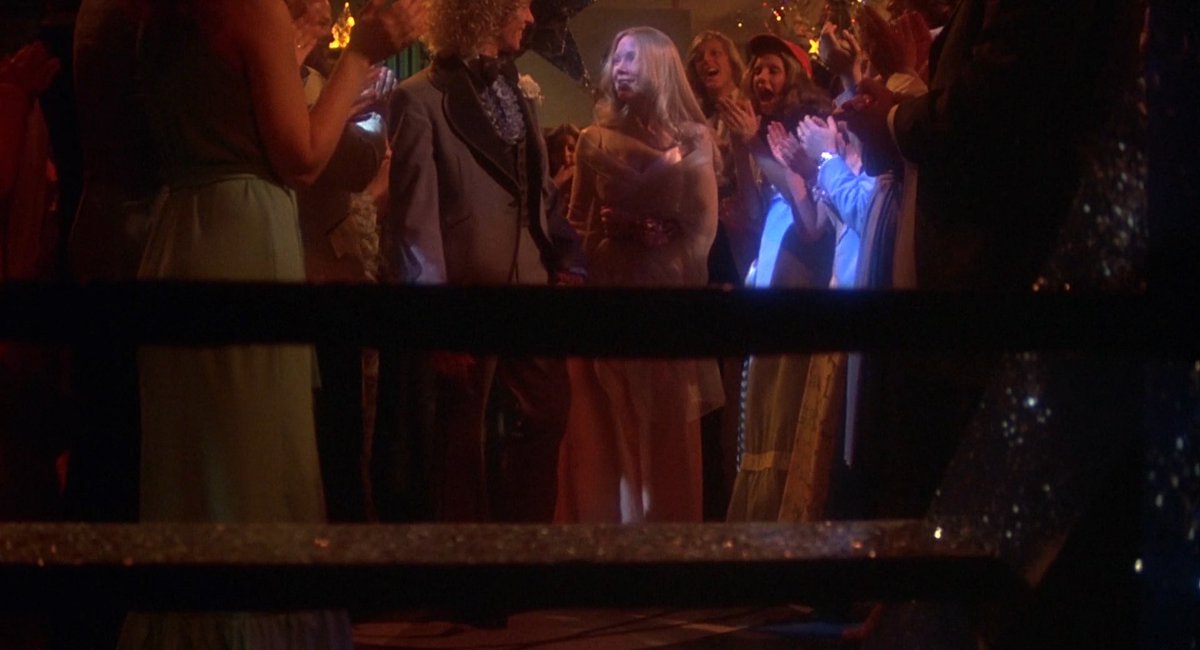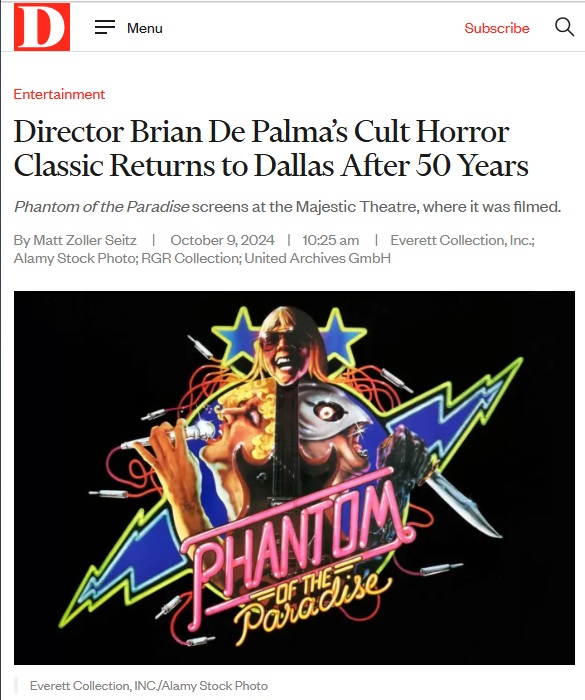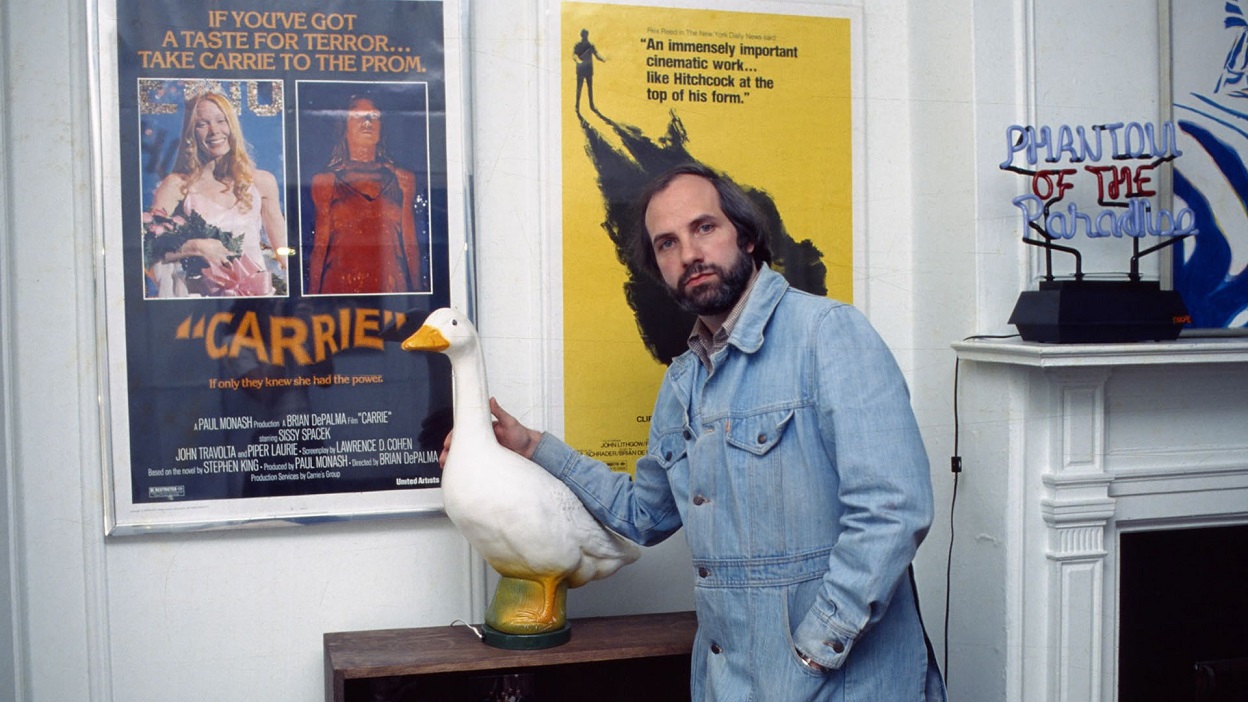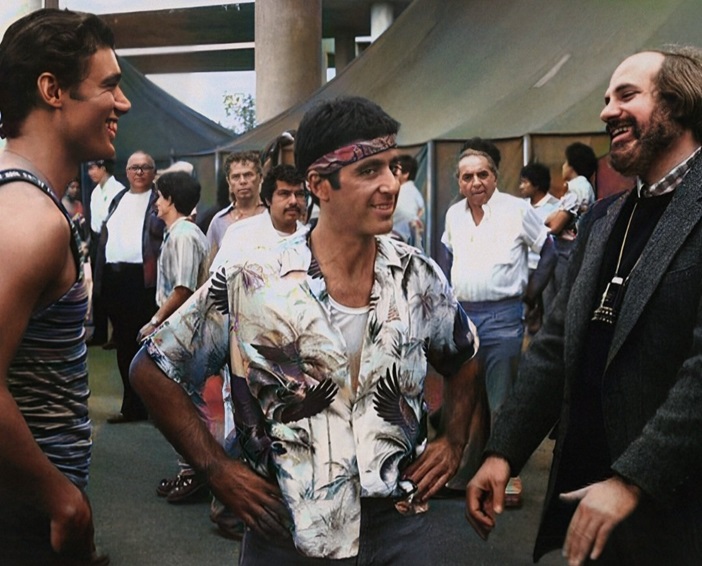THE INDEPENDENT'S GEOFFREY MACNAB LOOKS INSIDE CARRIE AS DE PALMA'S FILM RETURNS TO U.K. CINEMAS

With the headline, "‘De Palma saw horrendous things’: Inside the making of horror masterpiece Carrie," The Independent's Geoffrey Macnab writes about Brian De Palma's film adaptation of Stephen King's first novel, as it returns to U.K. cinemas this month:
“To me, Carrie is timeless in the sense that it deals with the notion of being different and with bullying. Those themes sadly are timeless,” says Laurent Bouzereau, author of new book The De Palma Decade: Redefining Cinema with Doubles, Voyeurs, and Psychic Teens.Carrie begins in the same way as the novel. The 16-year-old anti-heroine (Spacek) experiences extreme humiliation in the school showers. She’s pictured in slow motion, looking blissfully happy under the steaming water. Then the trauma begins. She begins to bleed from between her legs, doesn’t understand why, and is overwhelmed by terror. Her religious zealot mother (Piper Laurie) hasn’t taught her anything about her monthly cycles. The other girls mock her, throwing tampons and towels in her direction as she cowers in the corner of the shower cubicle.
“What made him [King] think that a bunch of guys intent (as King puts it) on looking at pictures of cheerleaders who had somehow forgotten to put their underpants on would be riveted by an opening scene featuring gobs of menstrual blood? This is, to put it mildly, not the world’s sexiest topic, and especially not for young men,” Margaret Atwood (author of The Handmaid’s Tale) observed in a recent New York Times article.
Atwood is a huge admirer of the King novel, which she regards as being as much about “all-too-actual poverty and neglect and hunger and abuse” as it is about the “weird stuff” – namely the extrasensory powers that Carrie soon develops.
King was the quintessential blue collar writer. The story of how Carrie first came to be published has long since passed into US literary myth. The down-at-heel author was living in a trailer, working as a teacher in a small town called Hampden and was living in nearby Hermon, a place he later described as the “asshole of the world”. He was trying to write for men’s magazines but not getting very far. He threw an early draft of Carrie into the bin – but the pages were salvaged by his wife Tabby, who was instantly fascinated by her husband’s strange tale about the tormented teenager. “She wanted to know the rest of the story. I told her I didn’t know jackshit about high school girls,” King remembered in On Writing: A Memoir of the Craft. She told him, “You’ve got something.” The publishers agreed and his career was launched.
De Palma was far too baroque a filmmaker to show much interest in the social realist elements of King’s novel. Instead, he directs in a stylised and extravagant way. The maverick auteur throws in moments of incongruously morbid humour, using split screen to add to the epic quality of the storytelling. He cuts the main set piece – Carrie being drenched in pig’s plasma at the end of the school prom – in exhaustive detail, choreographing it as if it were a complex battle scene.
Carrie is steeped in blood from beginning to end. The director, though, was at pains to explain this was make-believe, made from corn syrup and dye and designed to be “theatrically red”.
As a youngster, the filmmaker had spent a lot of time in hospital, watching his father, an orthopaedic surgeon, at work.
“He [De Palma] worked in the wards from a very young age and saw absolutely horrendous things, which made him somewhat immune to violence and blood,” Bouzereau tells me. “You can’t imagine how much blood is flying around in an operating room,” the director himself recalled in the 2016 documentary De Palma. The implication was clear: if he’d really wanted, he could have made the film far nastier and far darker.
Carrie was as much a distorted fairytale as a conventional horror pic. The tone veers from creepiness to high camp; nearly 50 years on, it continues to wrongfoot and discomfit audiences. Atwood points out that the novel was written when “the second wave women’s movement was at full throttle” but the early scenes of the film showing naked teenage girls cavorting in the changing rooms are uncomfortably voyeuristic.
At times, for instance when Carrie uses her psychic powers to make kitchen knives fly off walls, or when a blood-stained arm suddenly shoots out of a grave, the movie skirts close to the madcap Gothic world of a Tim Burton fantasy. Spacek, though, plays her character with such earnest and emotional rawness that she defies audiences to laugh at her.
The young star had painted sets on De Palma’s earlier 1974 movie, Phantom of The Paradise (she was married to the production designer Jack Fisk, whom she met on her breakthrough film Badlands). When she did her screen test, she was already in her mid-twenties, far too old and also seemingly far too demure for a tortured soul like Carrie. She smeared vaseline in her hair, dirtied herself up and behaved in such a feral manner that De Palma knew instantly he had to cast her, despite the studio’s misgivings.
Spacek explained how she got in character: “I went to that place where all teenagers spend a lot of time, where you’re the victim and everybody hates you and you’re locked in your room, writing poetry and hating your mother.”













